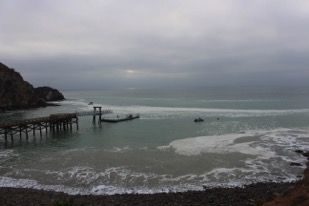
If you’ve spent enough time by the ocean, than you’ve most likely run into sea foam, a frothy substance that collects in breaking waves and sometimes finds its way onto beaches. It might even remind you of bubble baths from yesteryear! But what really makes foam? How does it make its way onto beaches? Tune into this blog to find out the answers to all of the above questions and so much more!
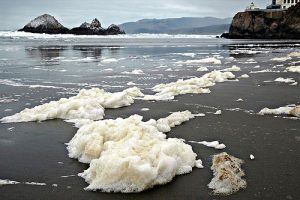 Russell Mondy
Russell Mondy
And now, Science…
What in the world creates this foam? Sea foam comes from a combination of dissolved organic matter, single-celled algae/algal bloom excretes, and inorganic stuff such as salts and human pollutants. All of this material gets churned up in the waves and currents near shore, trapping bubbles of air under the surface. These three types of molecules have a hydrophilic head a hydrophobic tail, shaped like a tadpole or a spoon. Simply put, the hydrophilic end is attracted to the water molecule while the hydrophobic end is not. These bubbles stay put because the hydrophobic and hydrophilic ends of the proteins line up to create a double-sided wall, which comprises the bubble boarder, a thin layer of water with molecules on both sides.
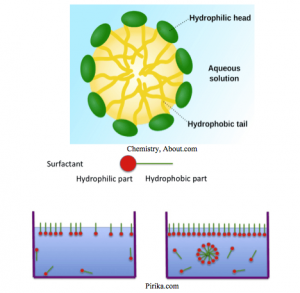 This type of molecule is called a surfactant and is basically soap, meaning the hydrophobic end sticks to oil or dirt, whereas the hydrophilic end sticks to water. Sadly, because of this “soap” effect, some seabirds will be essentially “de-waterproofed” and can die of hypothermia if covered in too much foam.
This type of molecule is called a surfactant and is basically soap, meaning the hydrophobic end sticks to oil or dirt, whereas the hydrophilic end sticks to water. Sadly, because of this “soap” effect, some seabirds will be essentially “de-waterproofed” and can die of hypothermia if covered in too much foam.

What might you take away from this little lesson in science? That ocean foam is all that stuff in the water getting reorganized into massive amounts of bubbles! Now that we have an understanding of what sea foam actually IS, let’s talk about where we can find it! Look no further than our very own coves here on Catalina Island! Especially when the waves are rough, we see plenty of sea foam gathering by the rocks near shore. This is where the wave action is most intense, therefore churning up the proteins and creating the thick layers of foamy spume. But where else in the world can we find large amounts of foam? Spume Island in the Palmer Archipelago of Antarctica is so inundated with foam that they named the place after it! Yamba in New South Wales, Australia, is another location around the globe notorious for its foamy beaches.
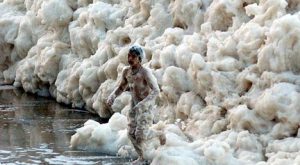 Tree Hugger
Tree Hugger
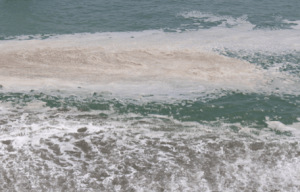 CIMI
CIMI
If you ever feel like you need some foam in your life, then look no further than a jar full of seawater! In the experiment that our professional scientists recreated in the above video, they simply took a jar full of seawater and shook it up! This activated the proteins and molecules within the seawater to create those thick bubbles. So, sea foam is more achievable than you might think! Whether it’s in your bathtub or washing ashore, sea foam is abundant anywhere there is turbulence!
Images:
- https://www.flickr.com/photos/v63/91723833/
- http://f.tqn.com/y/chemistry/1/W/N/f/2/micelle.png
- https://www.pirika.com/images/Sur1.jpg
- http://media.oregonlive.com/news_impact/photo/bird-in-foamjpg-0b2b803eb33738b5.jpg
- http://www.treehugger.com/natural-sciences/foaming-ocean-whips-beachgoers-into-a-frenzy.html
- http://img11.deviantart.net/cf7d/i/2012/011/5/4/sea_foam_at_ocean_beach___san_francisco_by_babybluejeff-d4m1e4d.jpg


